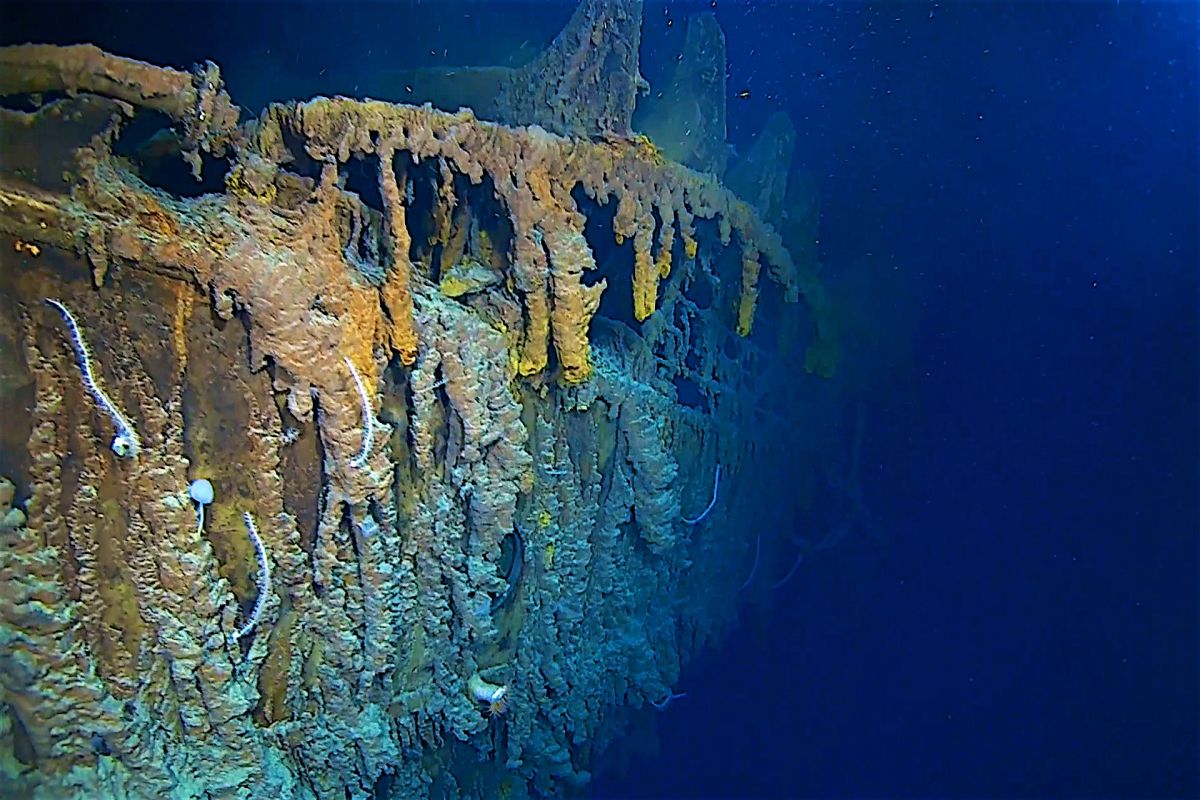The Titanic has hit the headlines again more than a century after the shipwreck took place. The state of the wreck has withered to a shocking degree, if the finding of the “first dive” in 15 years is any indication. This is a double whammy for the once opulent vessel that sank in 1912 and has been the subject of a masterpiece on celluloid, even a topic of riveting interest in terms of historiography.
Both the catastrophic voyage and now the natural devastation have captured the imagination of film makers and historians. Horror of horrors, it is now rapidly being destroyed by metal-eating bacteria, salt corrosion and deep ocean currents. An international team of explorers made five dives with manned submersibles in early August to survey and photograph the ship, which lies at a depth of 3,800 metres in the North Atlantic. The sinking of the ship was an accident, almost exceptional.
Advertisement
One hundred and seven years later, Nature has taken its course and will do so still more devastatingly with the march of time. As much is clear from the version of Lori Johnson, an expedition scientist ~ “The wreck is going to continue to deteriorate over time, it’s a natural process.” Eerie footage from the expedition shows the ship’s bow covered in rusticles ~ formation similar to icicles that form as bacteria and slowly consume the metal. Parks Stephenson, a Titanic historian on the expedition, said that some features of the captain’s quarters have completely decayed.
“The captain’s bath tub is a favourite image among the Titanic enthusiasts, and that’s now gone,” he said. “That whole deck on that side is collapsing taking with it the staterooms,” has been his high-minded lament. “Titanic is returning to nature,” Stephenson told the BBC. More accurately, the ship has lapsed in the limbo of maritime history. The RMS Titanic has been on the ocean floor since 1912 after colliding with an iceberg on her maiden voyage from Southampton to New York.
More than 1,500 people perished when the ship, which was carrying 2,224 passengers and crew, sank under the command of Captain Edward Smith, who went down with the ship. The vessel was the largest afloat at the time and was billed as unsinkable. It now lies in two main pieces about 600 metres apart. While on the site, the expedition team laid a wreath and held a short ceremony in memory of those who lost their lives.
The devastated wreck is a stark epitaph on the voyage that wasn’t and a calamity that was. The Titanic was long assumed to have sunk in one piece, but when the wreck was discovered in 1985 it was found to have broken up before reaching the ocean floor. The scientists will publish their material alongside a documentary film by Atlantic Productions.
